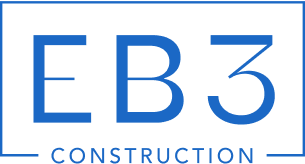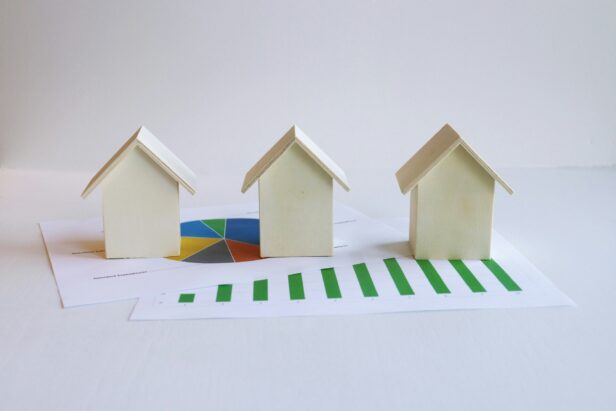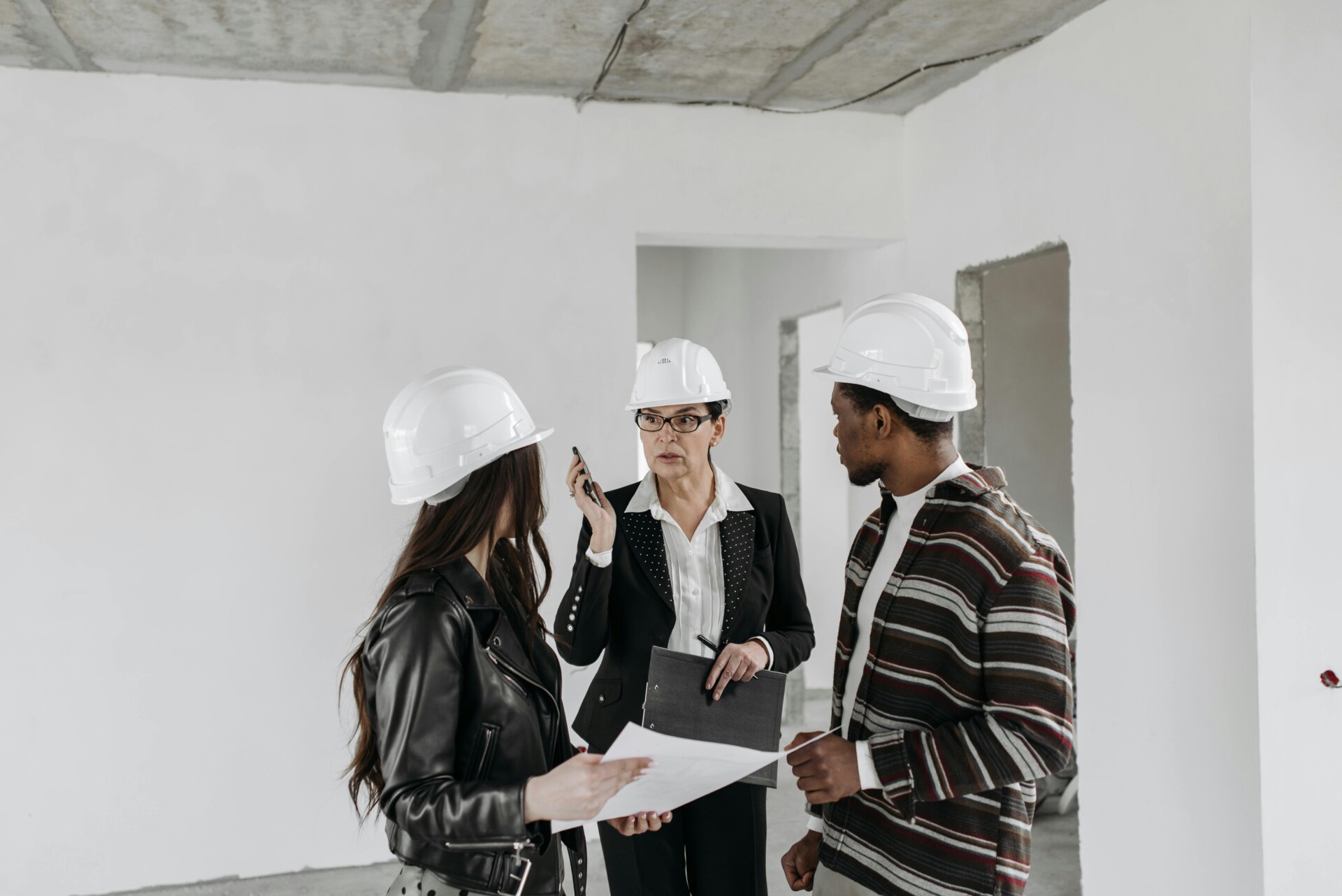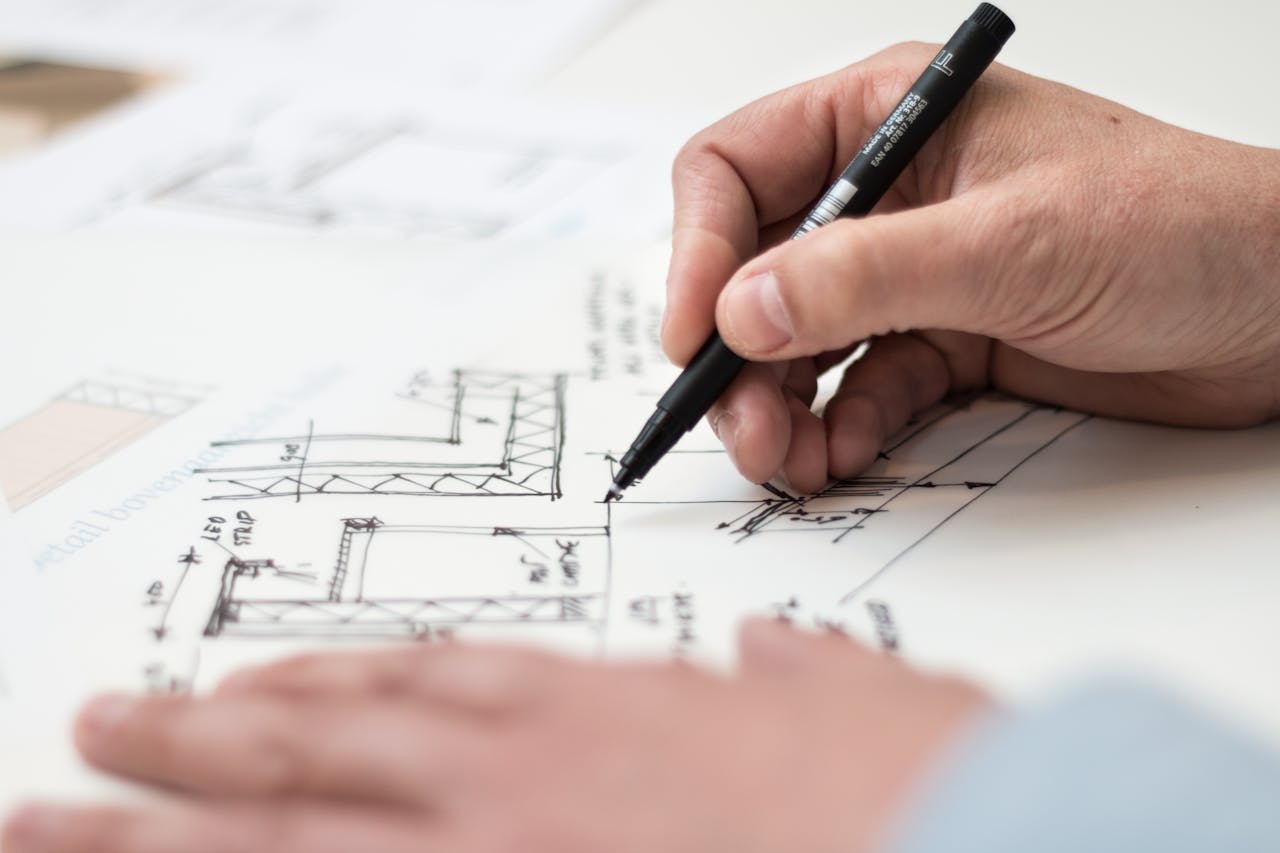In the current construction market, budget planning is a significant concern for developers and property owners aiming to build commercial spaces. At EB3 Construction, we recognize that typical commercial building construction costs range widely across the United States, reflecting the many variables influencing each project’s budget.
The cost of construction can differ significantly based on project size and type. For example, small office warehouses may have different cost structures compared to large retail box stores. Our construction feasibility studies conducted during the pre-planning phase can help refine estimates tailored to specific projects.
Four critical factors we consider that drive price variations include design complexity, the building’s intended use, finishing quality, and geographical location. Medical facilities, for instance, may require specialized mechanical systems that can increase costs compared to basic warehouse construction. Similarly, building in different locations can present varying price points due to factors such as labor market differences, material availability, and code requirements. We typically factor these elements into initial cost projections when establishing client budgets.
How Do Construction Methods Affect Commercial Building Costs?
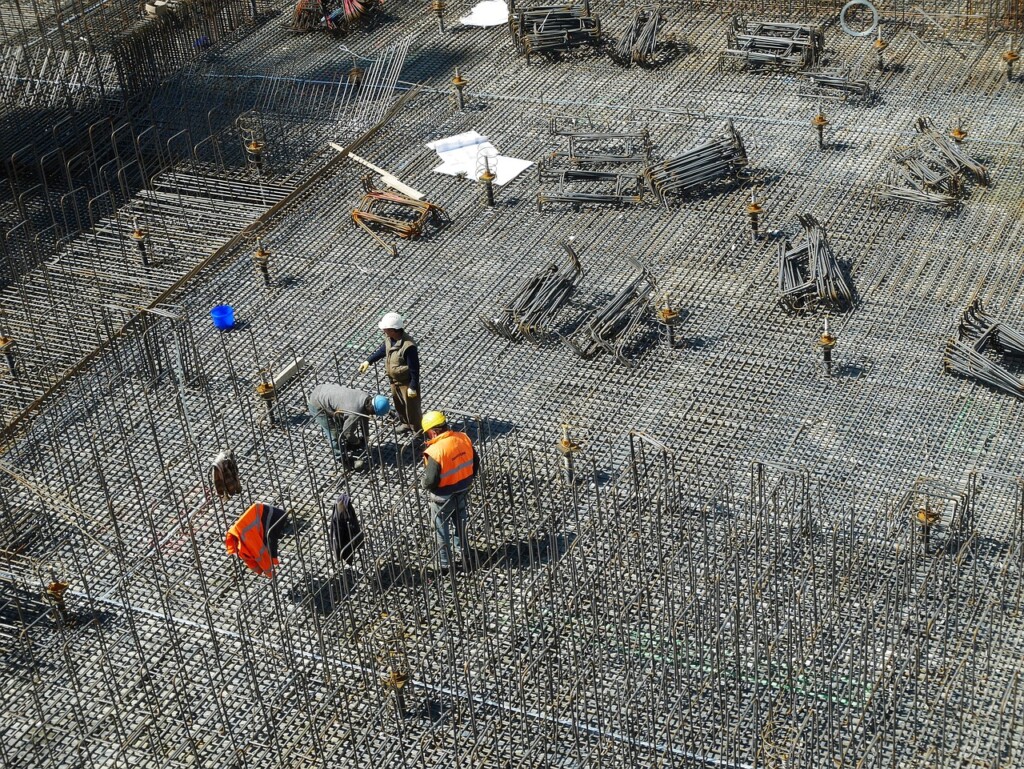
The construction method chosen for a commercial project can impact the budget, timeline, and long-term operating costs. At EB3 Construction, we evaluate different methods that offer financial benefits and practical considerations.
Pre-Engineered Metal Buildings (PEMB)
PEMBs are typically a cost-effective solution we often recommend for commercial construction. Prefabricated components can reduce labor needs and shorten construction schedules compared to conventional methods.
We find PEMBs suitable for single-story warehouses and industrial facilities requiring clear-span interiors. Prefabrication can reduce material waste, and metal components offer durability against environmental factors. For projects with tight deadlines or budget constraints, PEMBs can be a practical choice.
We also note that modular designs enable future expansions beneficial for growing businesses, although standard PEMB packages may limit design flexibility for highly customized visions.
Light Gauge Steel Framing
We often suggest light gauge steel framing for projects needing design flexibility and cost control. This approach can be ideal for office buildings, retail spaces, and mixed-use developments where aesthetics matter.
Our experience shows lightweight materials facilitate easier on-site handling, potentially reducing labor costs compared to heavier structural steel. Additionally, we appreciate their consistent structural performance, avoiding issues like warping that affect wood framing.
Light gauge steel allows for complex architectural features and non-standard layouts, balancing cost-efficiency with design adaptability—a popular choice for value-driven clients.
Structural Steel Framing
For multi-story or structurally demanding projects, we typically recommend structural steel framing. Its strength-to-weight ratio allows larger spans, creating flexible interior spaces for future modifications.
Structural steel supports complex geometries and architectural statement pieces. Although market fluctuations in steel prices may affect costs, the durability and adaptability justify the investment for many commercial applications. We advise clients seeking long-term value to consider structural steel despite higher initial costs.
We note erection times with structural steel can be faster than concrete methods, enhancing overall project timelines and flexibility.
Tilt-Up Concrete Construction
We recommend tilt-up construction for warehouses and large retail facilities, as this method allows quick assembly with panels cast on-site.
Tilt-up is advantageous for larger buildings, providing durability, fire resistance, and energy efficiency. We advise clients with ample site space to consider tilt-up due to potential schedule advantages and high-quality control.
How Does Location Affect Commercial Construction Costs
At EB3 Construction, we recognize geographical location as one of the most significant drivers of commercial construction costs. Variances between regions can substantially influence cost per square foot, making it critical to understand regional differences for accurate budgeting and planning.
Eastern U.S. Construction Costs
In the Eastern United States, particularly major metropolitan areas, construction costs can be among the highest nationwide due to urban density, logistical challenges, local building codes, and labor demands. At EB3 Construction, we plan for seasonal weather patterns like winter conditions in the Northeast, which require additional preparation and budget contingencies.
Western Region Construction Considerations
The Western U.S. has unique cost considerations, often ranking among the most expensive markets nationally. We account for factors like seismic regulations requiring specialized structural systems and environmental building requirements emphasizing sustainability, which can significantly influence overall project expenses.
Midwest Market Factors
The Midwest generally presents a moderate cost environment. At EB3 Construction, we consider the availability of local materials, skilled labor, and temperature extremes when planning projects. Competitive labor markets and established supply chains can help manage construction costs effectively.
Southern Regional Considerations
The Southern U.S. often provides a cost-effective environment for construction. Our team highlights factors like extended construction seasons due to milder winters, streamlined permitting processes, and variations in labor costs influenced by prevailing wages. Coastal areas may require hurricane-resistant techniques, adding unique considerations to our regional planning.
What Additional Costs Should Be Considered When Building a Commercial Property?

At EB3 Construction, we emphasize the importance of considering various additional costs beyond basic construction expenses. Recognizing these expenditures early ensures accurate budgeting and helps prevent financial strain throughout the project.
Professional Fees and Services
Our projects typically involve teams of professionals, including architects, structural engineers, and specialized consultants. These services represent significant investments, crucial for avoiding design errors and ensuring regulatory compliance. Effective management of professional relationships helps balance functionality, regulatory requirements, and budget constraints.
Site Preparation and Development
Site preparation can be a substantial expense. Our team addresses tasks like excavation, grading, soil testing, contamination remediation, and foundation work. Additionally, we coordinate with utility providers for essential infrastructure connections, factoring these into initial budget planning.
Permitting and Regulatory Compliance
Permits, zoning approvals, and regulatory compliance fees are key considerations. We help clients navigate inspection schedules and compliance documentation to minimize delays. Additionally, environmental assessments and studies, such as stormwater management and traffic impact analyses, are often required depending on location and project scope.
Financing and Carrying Costs
We recognize the significance of financing costs, including interest during construction, loan origination fees, and appraisal costs. Our financial planning includes contingency funds—typically 5% to 15% of the total budget—to address unforeseen conditions, providing flexibility and financial stability during construction.
Technology and Building Systems
Modern commercial buildings often require substantial technology infrastructure, including security systems, data networks, audio-visual equipment, and specialized HVAC systems. We collaborate with MEP engineers to balance upfront costs with long-term operational efficiency.
Exterior Elements and Signage
Exterior signage and parking lot construction represent significant additional expenses. At EB3 Construction, we ensure these elements meet ADA accessibility standards and local parking requirements, integrating these considerations early in our planning to optimize budgets and timelines.
How Can You Reduce Commercial Building Construction Costs?

At EB3 Construction, managing construction costs effectively is one of our primary objectives. Through strategic planning and informed decision-making, we help clients significantly reduce expenses without compromising on quality or structural integrity.
Invest in Thorough Pre-Construction Planning
Comprehensive pre-construction planning is essential for controlling costs. Our team engages early in the process to identify potential challenges, create accurate budgets, establish realistic timelines, and minimize costly changes. Investing in thorough planning upfront can lead to considerable savings throughout construction.
Consider Design-Build Delivery
We advocate for design-build delivery methods, which foster close collaboration between designers and builders from the outset. This integrated approach reduces communication gaps, helps identify practical solutions early, and minimizes costly redesigns or construction-phase modifications.
Optimize Building Design for Efficiency
Our experience shows that simpler, functional designs typically cost less. Standardizing dimensions and using modular components can reduce labor costs and material waste. We recommend practical design choices that maintain functionality and aesthetics without unnecessary complexity or expense.
Leverage Value Engineering
Value engineering systematically identifies cost-effective alternatives that meet project requirements without compromising performance. We evaluate alternative materials and systems, such as roofing and mechanical installations, to deliver comparable results at lower costs, yielding significant savings across projects.
Implement Efficient Procurement Strategies
Effective procurement strategies are critical for cost control. At EB3 Construction, we utilize established supplier relationships, bulk purchasing, and strategic timing of material procurement to achieve favorable pricing and avoid unnecessary storage or damage costs.
Utilize Prefabrication and Modular Construction
Prefabrication improves construction efficiency. By incorporating off-site manufactured components such as wall panels and structural elements, we reduce on-site labor requirements, minimize delays, and enhance quality control. Prefabrication also shortens project timelines, translating into cost savings for our clients.
Manage Labor Resources Effectively
Labor management is crucial to controlling costs. We maintain detailed schedules and coordinate trades efficiently to optimize workforce utilization. Our experienced superintendents balance crew sizes, avoiding overstaffing while ensuring productivity, thereby maintaining project efficiency and budget discipline.
Incorporate Energy-Efficient Systems
Energy-efficient systems, while initially more costly, offer significant long-term operational savings. We perform lifecycle cost analyses to justify investments in high-efficiency HVAC, LED lighting, enhanced insulation, and smart building controls, delivering lasting financial and environmental benefits.
Minimize Change Orders
Change orders can significantly impact budgets. At EB3 Construction, we implement rigorous change management processes, clear documentation, and open communication with stakeholders to minimize costly changes. When necessary, we strive to reduce the financial and schedule impacts of modifications.
Conclusion: Planning Your Commercial Building Budget

Planning and executing a commercial construction budget requires strategic foresight and disciplined implementation. At EB3 Construction, we advise developers and property owners to establish comprehensive budgets early in the pre-planning phase to achieve cost-effective outcomes. By analyzing construction methods, regional cost variations, and building specifications from the outset, we create a financial framework that guides the entire project.
Balancing immediate construction expenses with long-term operational costs is essential, especially as material prices and labor markets fluctuate regionally. Our recommendations align different building types and methods with clients’ operational goals and financial expectations, ensuring optimal investment value.
Contingency planning significantly impacts project outcomes. We typically suggest allocating a portion of the total budget for unexpected expenses, providing flexibility to handle unforeseen site conditions or shifts in material availability. This proactive approach helps avoid costly mid-project adjustments.
Commercial construction represents a substantial investment in your business’s future. Partnering with EB3 Construction means working with professionals who understand cost optimization and quality requirements, supporting project success beyond the building phase. Decisions on construction methods, material selections, and budget allocation profoundly influence your property’s long-term performance and value.
Contact EB3 Construction today to develop a customized commercial building budget designed to maximize your investment potential.
